Earlier this week, Verizon hosted a media event at its Innovation Center in San Francisco to highlight some of its recent business ventures and tech projects. There were glass-paneled tables, a huge interactive mural, and a handful of promo videos explaining how the Center partners up with other companies, big and small, to solve problems in health care, environmental, and consumer industries using technology. Oh, and there was hummus. It was nice.
There were also dozens of demos that went over several of Verizon’s key projects. Some devices are very close to coming to market, whereas others, like the Golden-i headset below, are already available to consumers.
And while many of the devices’ original intentions are useful and admirable, it was also all too easy to see how technology that’s meant to “answer life’s toughest problems” could be used for less-compelling purposes. Check out the list below for some of the Center’s more notable devices, and feel free to tell us what you think of these gadgets in the comments below.
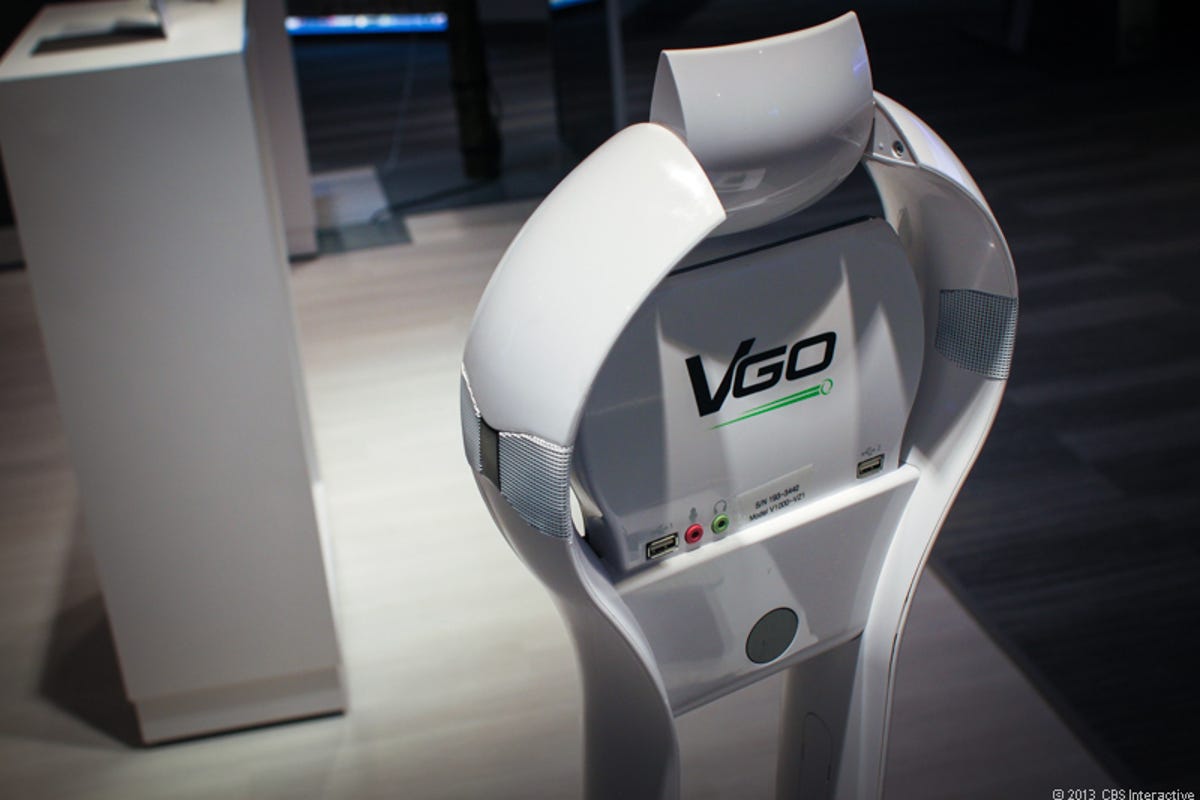

Lynn La/CNET
VGo Telepresence Robot
What it does: VGo is a mobile robot with two-way video and audio communication so users can move it around while interacting with others. Though it has applications in remote health care and business management, you may recognize VGo from Verizon’s commercial about a sick child who is able to attend class via VGo.
What it could also do: One VGo with Verizon’s 4G LTE connectivity is about $6,900, and there’s a $1,200 yearly fee as well. So though it’s expensive, it’s not that unaffordable. With that in mind, I wouldn’t be surprised if VGo suddenly came along on family vacations to Macau just so Grandpa Vanderbilt doesn’t feel left out. At least that way he can take fully automated selfies.
What it shouldn’t do: Be used by overbearing bosses as a way to micro-manage their employees when they’re supposed to be “working from home.” Sheesh.
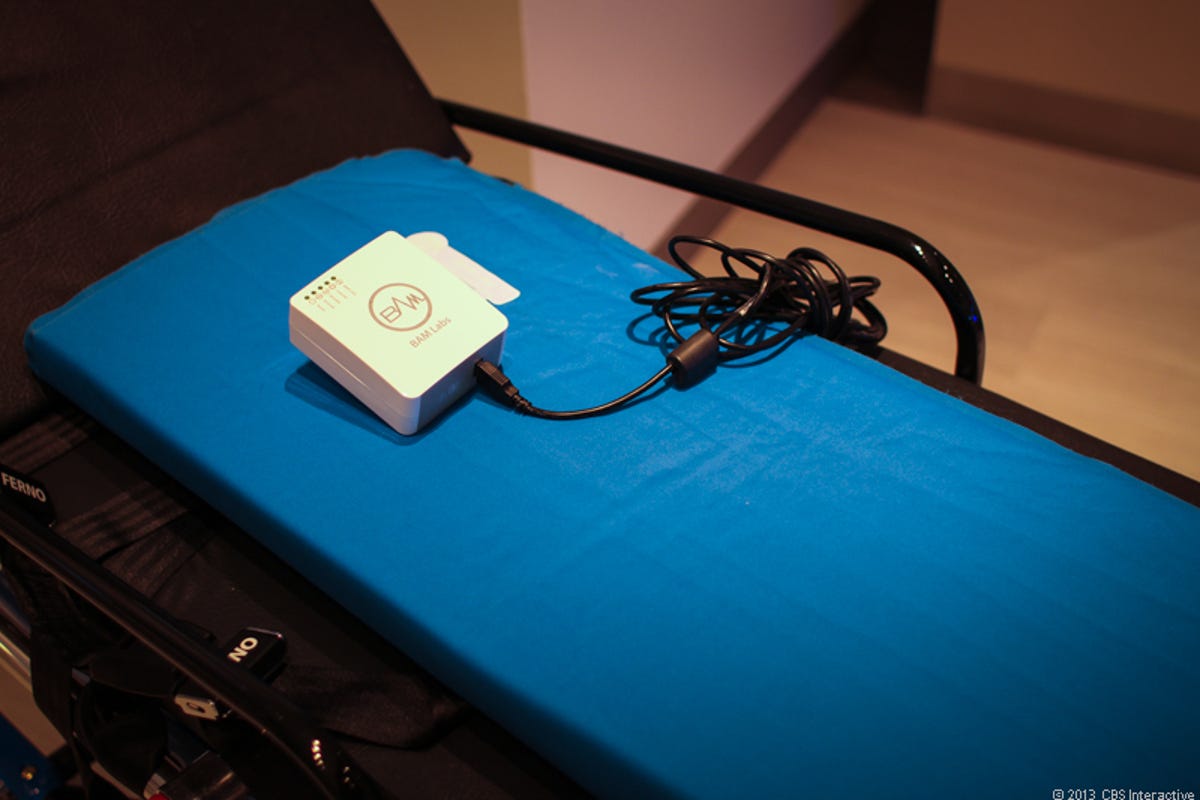

Lynn La/CNET
BAM Labs Smart Bed Sensor Mat
What it does: Aimed toward assisted care industries like senior centers and nursing homes, this mat monitors users’ heart rates, respiration patterns, and motion. It can also gather and present all these data points and statistics to nurses and doctors for analysis, as well as alert health care workers when a patient gets up off the bed, needs to be physically turned, or can’t go to sleep.
What it could also do: Move you to the top of the class at your high-end yoga studio thanks to all that obscure data you collected about yourself.
What it shouldn’t do: Be used against significant others by their paranoid mates. “It says here that your heart rate increased to 145BPM at 2 a.m. last night! Oh my God, who is she?!”
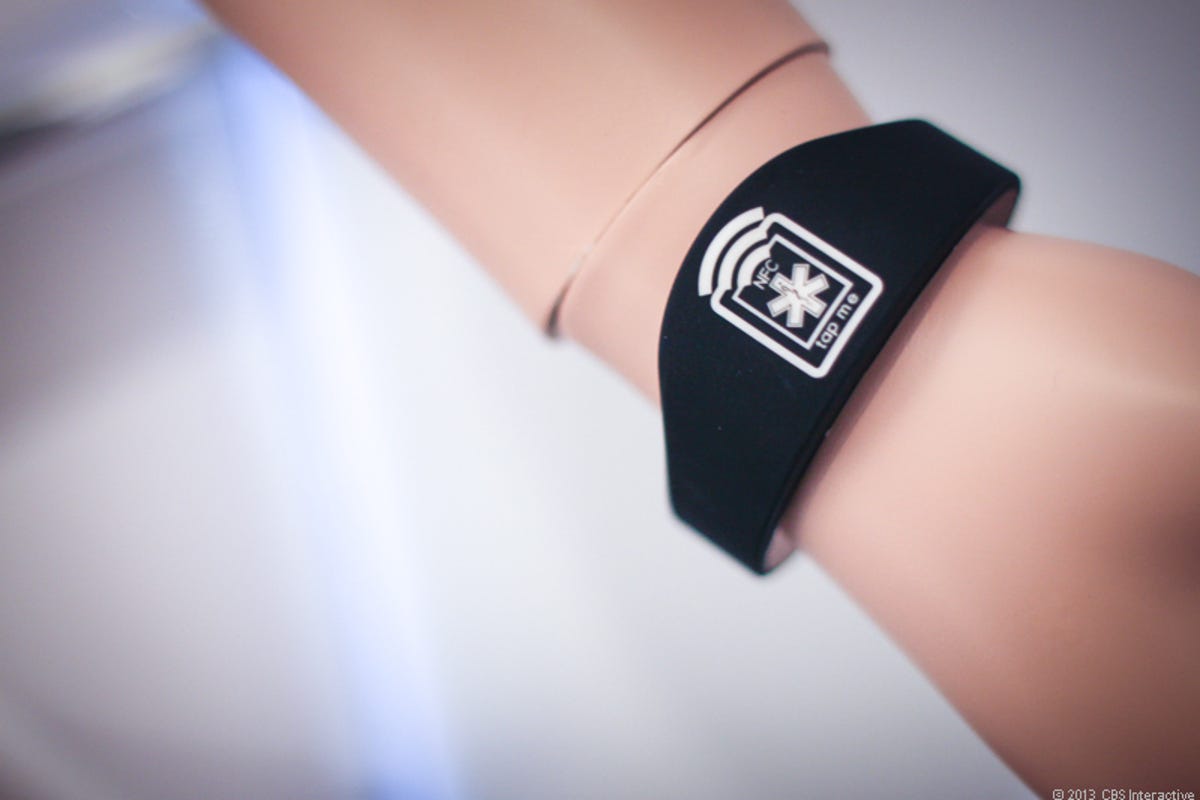

Lynn La/CNET
HealthID NFC band
What it does: The band stores pertinent medical and emergency information like known illnesses, blood type, and MRI lab results that health care providers can receive via NFC and view on their smartphones or mobile devices.
What it could also do: Is there such a thing as reverse helicopter parenting? With HealthID, it’s not a stretch to imagine well-intentioned kids of the sandwich generation constantly wanting to scan their parent’s HealthID to make sure everything’s all right. Having this information on hand (literally) isn’t necessarily a bad thing, but now your mother really can’t lie about you being her first emergency contact (you knew she always liked your brother better).
What it shouldn’t do: Turn you into the biggest over-sharer on your next blind date.
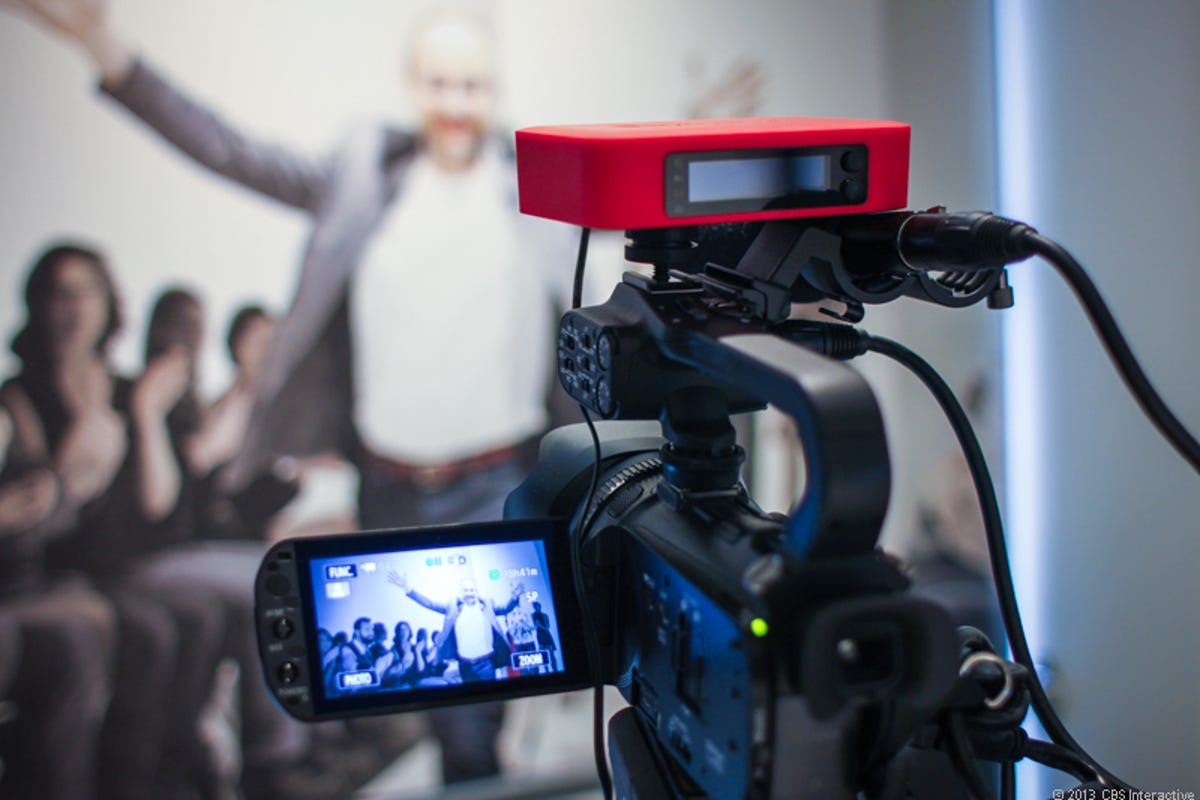

Lynn La/CNET
Livestream Broadcaster
What it does: Portable and stylish, this $495 bright-red broadcasting unit allows you to beam HD live video online through Verizon’s 4G LTE network. Audiences around the world can tune in to whatever you’re recording, so you can be a one-person cable station.
What it could also do: At the Innovation Center, Verizon used an example of streaming a fashion show for a possible application for the device. But in addition to shooting NY Fashion Week, broadcasting devices such as this one allow citizen journalists (think Arab Spring and the Occupy movement) to document protests and upheaval — ensuring everyone that the revolution will be televised.
What it shouldn’t do: The Livestream Broadcaster doesn’t always have to be used for historic, world-changing events (for example, college professors who stream their lectures online are basically angels in disguise). But we should have a standard, shouldn’t we? As in, no, I do not want to “click this link” to see little Tommy’s live soccer match at St. Mary’s Playground.
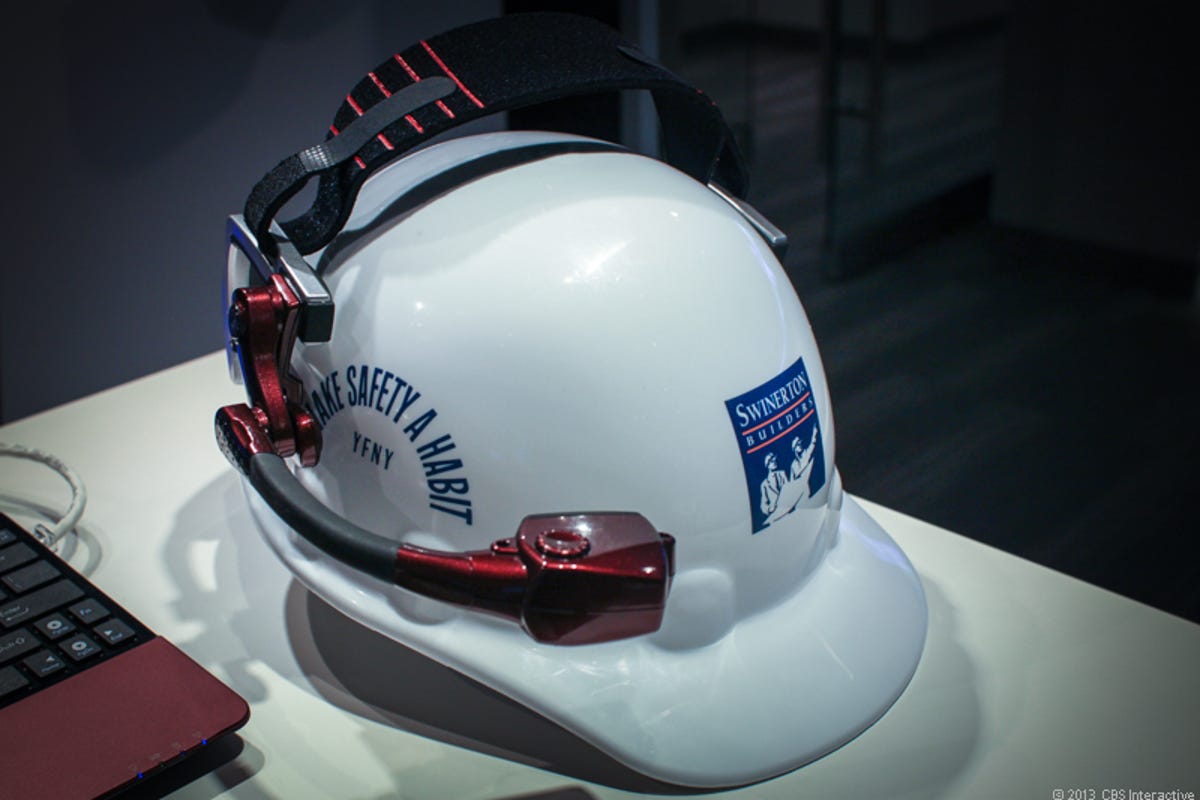

Lynn La/CNET
Golden-i Wireless Headset
What it does: Designed for paramedics, police enforcement, firefighters, and everything else in between, the Golden-i is a lightweight, mobile computing and communication headset that’s now in its third iteration. Verizon had it help firefighters navigate through a burning building in an artsy promo video, but it can also help police officers scan license plates, and paramedics can instantly access medical record on the go.
What it could also do: Transform you and your friends into the greatest paint-balling team ever.
What it shouldn’t do: Transform you and your friends into the most annoying, super-intense Battlefield 4 platoon ever.



